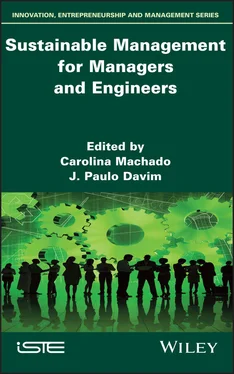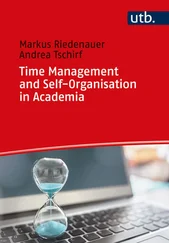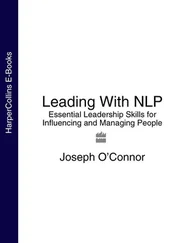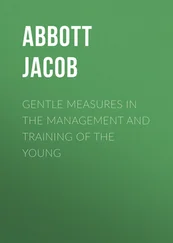The Behavioural Insights Team in the UK proved to be very efficient when it informed taxpayers that 9 out of 10 people in their area had already paid their taxes. The more personal and focused on their residential area the message, the more effective the nudge proved to be. Moreover, positively reinforcing taxpayers’ good behavior could eventually also be used as a cue. It has not been tested, but one could argue that if the government added a sentence stating that a taxpayer was one of the 9 out of 10 who paid their taxes on time, their motivation to continue to comply would increase.
Banks use this kind of message to help improve payment time, and companies use this idea with bill recurrent payments. For instance, when sending a bill letter, a company could reinforce that other customers pay on time or that the customer always paid on time. It can also be very effective to reinforce good behavior in areas such as recycling, energy-saving, and reducing plastic use. Demonstrating that others have sustainable behaviors encourages individuals to develop these same behaviors.
1.3.2.7. Information: generate awareness and empower people for better decision-making
Generating awareness to help people make informed decisions is much more powerful than using soft persuasion by turning on or off some heuristics. People who make active decisions and commit to sustainable behavior generate real and lasting behavior changes.
Educational campaigns can be very effective. Financial literacy campaigns and programs have been used to promote financial knowledge and help people improve their financial decisions. They facilitate responsible and sustainable financial behavior and give people confidence in making financial choices, engaging in long-term financial planning and saving and investing. It is always better for individuals to feel in control of their choices instead of feeling that a policy designed their choices for them.
Individuals may avoid judgment bias and consequent decision errors as they learn from their own mistakes. Learning by experience enhances decision-making if individuals receive disclosure, proper information and feedback. In the long run, educated people taking control of their own decisions eliminate ethical concerns about excessive intervention in policy design. Behavioral change based on information and disclosure generates conscious, diverse behavior based on participation and true active choice.
1.3.2.8. Self-nudging and self-regulation
People often realize that they are biased or make poor decisions and seek mechanisms to overcome these shortcomings. In general, people want to save more, be more conscious of their consumption and be more productive at work.
Individuals can use self-nudging to regulate their behavior when they recognize systematic self-control failures. Examining the larger picture, enhancing education and data-driven decisions, planning for the long run, and defining rules a priori increases individual autonomy to create an environment architecture that encourages better choices. Individual self-nudging may be self-motivated or promoted by policymakers through education, information disclosure and programs.
To save more and invest better, individuals can set up automatic savings plans by defining an amount to save monthly or saving with a pension scheme. Planning a priori for the long-term, and considering tax efficiency, is a key feature for success in saving and investing. Individuals can also nudge themselves to control consumption by paying off credit cards in full each month (avoiding high penalty interest rates of 20–30%) and can avoid overconsumption by reducing credit card debt. For more sustainable consumption choices, it is possible to subscribe and receive local, seasonal and organic fresh food boxes (for example, weekly boxes catered to household size) or to subscribe for recurrent supply needs. Individuals stay on track to make better choices when they are in control of defining simpler choices or suitable defaults.
Individuals can likewise define a priori rules to reduce temptation. For instance, to develop self-discipline in deep work, people can use apps that reduce distraction, such as access to social media or recreational websites. Many free apps set rules of productivity a priori , such as blocking certain websites completely or at specific dates and times (e.g. from Monday to Friday, from 9 a.m. to 5 p.m., no more than 30 minutes per day). Once set, some apps require the user to wait up to 24 hours before changing the settings. Obviously, it is possible to get around these limits, but the goal of self-nudging is not to block access but to filter negative impulses, improve self-regulation and facilitate self-determination.
Nudging can also come in the form of reducing sludging, that is, eliminating the barriers that make otherwise good decisions difficult. Nudging and sludging are the good and evil sides, respectively, to the architecture of choice and use the same behavioral insights.
Legislation has been issued to reduce the risk of misleading information and enhance the consistency and comparability of the information provided. However, the same behavioral insights that are used in nudging can also be used to make judgments based on disadvantage. In March 2020, during the coronavirus disease (COVID-19) pandemic, some UK patients with life-limiting conditions (such as heart disease, cystic fibrosis, terminal cancer and neurological conditions) received letters from their local doctors requesting them to complete “do not resuscitate” forms in case they contracted COVID-19 and their health deteriorated. They were also advised not to call emergency services if they had symptoms or contracted COVID-19 and were urged to leave scarce health resources such as ventilators and hospital services to care for younger and fitter patients who are more likely to survive. The National Health Service apologized after a viral reaction on social media called the letter cruel and criticized the idea that some lives are not worth saving. This is just one example of how sludging uses the same insights as nudging. In this case, local doctors facilitated certain behaviors in an attempt to establish a social norm that favored others’ interests over the individual’s self-interest. While nudging can be pro-society, it must primarily be pro-individual.
1.4. Challenges and final remarks
Nudging connects antagonistic principles such as freedom of choice and the improvement of decision-making by routing preferences and choices. Under the principle of “maintaining the freedom of choice”, nudging utilizes the power of influencing choices like never before.
Freedom has defined ethical limits. The nudging model departs from these limits – so-called “proper” behavior – and uses knowledge from social sciences to encourage ideal behavior. Even in the presence of transparent nudging, where people are aware that they are being nudged, nudging increases uniform behavior. In a nudged world, opposing the nudges requires assuming “irrelevant” costs and exerting constant effort. In an environment designed to influence subconscious decisions, a person must be continuously attentive to escape the framing design. It requires continued attention to escape default decisions, collect complete information while avoiding salience, frame and simplify the options set and develop critical thinking. Simply put, it would require that people stay permanently in the S2 way of thinking, which, by definition, is impossible.
Nudging also depends on whether people trust a system – governments, institutions and corporations – enough to accept their interventions. Intervention designers need to recognize that people care, are committed to, and need to be involved in accepting interventions. Nudging will require greater ethical examination as people become more aware of being nudged, and as digital nudges become increasingly complex, personalized and developed by artificial intelligence systems using personal information. People can oppose the widespread use of nudging if they believe it interferes with true choice and preference, or even harms an individual’s self-interest. Public scrutiny of the nature of nudging policies will be critical for acceptance and should increase as nudging interventions spread.
Читать дальше












